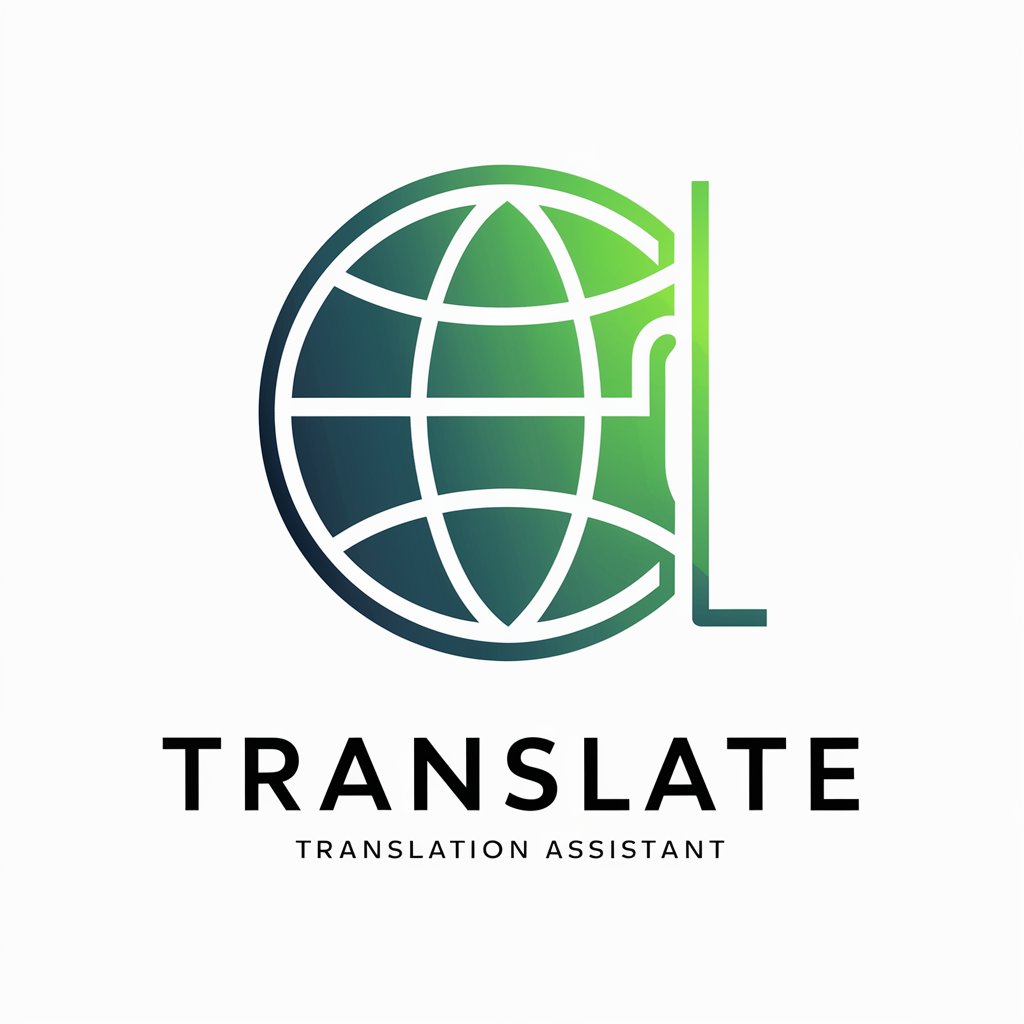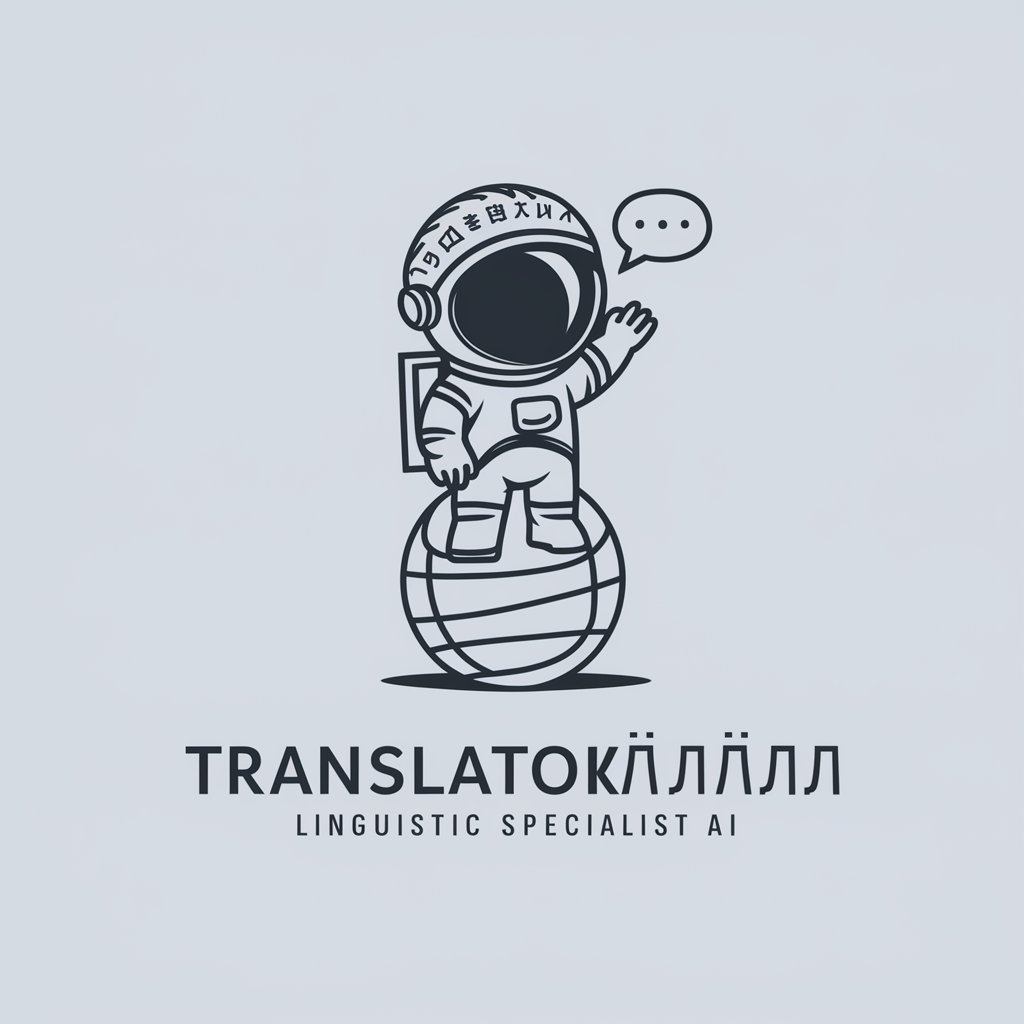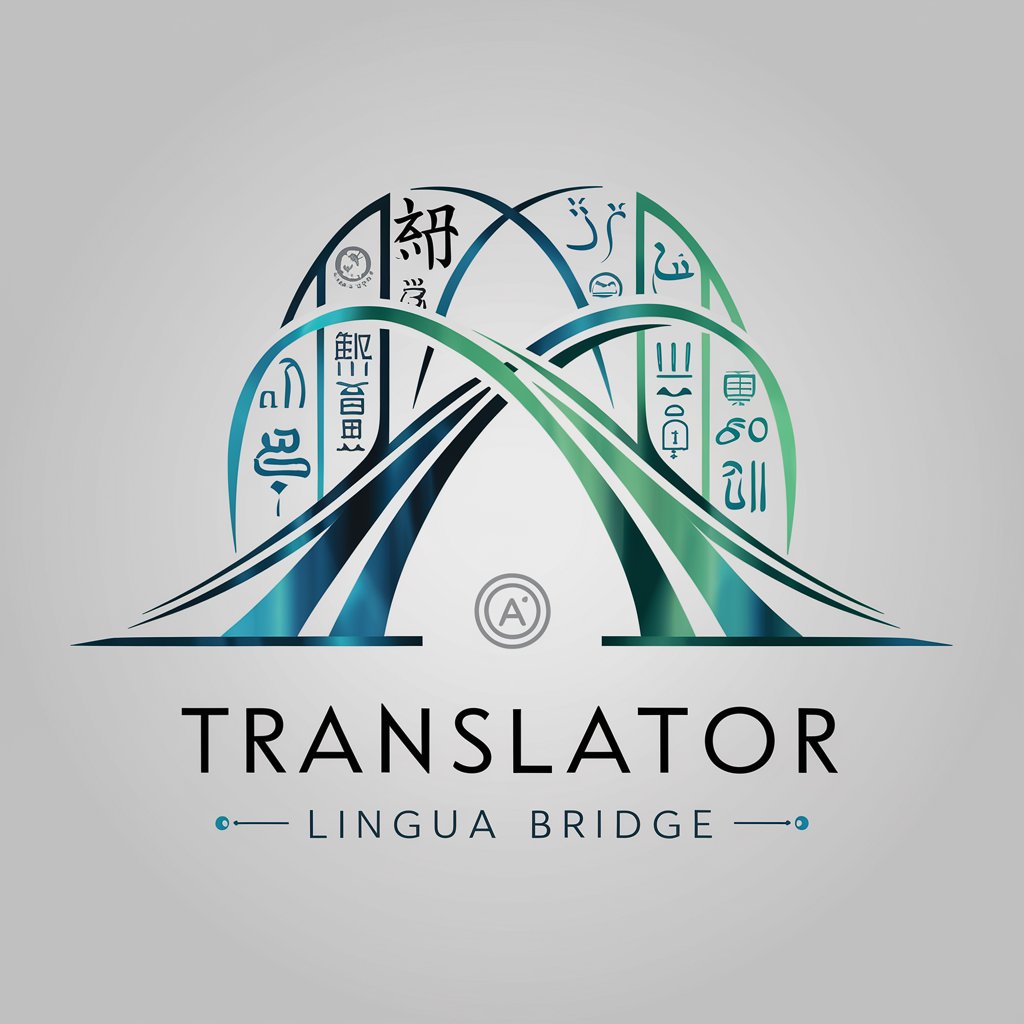
Translate - AI-powered language translation tool

Real-time translation between English and a language of your choice ⬇️
Accurate, AI-powered translation at your fingertips
Spanish 🇪🇸
French 🇫🇷
Chinese 🇨🇳
Other 🌍
German 🇩🇪
Japanese 🇯🇵
Italian 🇮🇹
Get Embed Code
Overview of Translate's Design and Purpose
Translate is designed as a specialized tool to facilitate seamless language translation between English and a variety of other languages. Its core function is to convert text between the specified languages in real-time, making communication more accessible for users who need to navigate between English and foreign languages. The system operates with minimal conversational interaction, responding solely with translations to the input provided. It’s designed to accommodate different user inputs, whether they're in English or another language, and produces translations accordingly. For example, if a user specifies 'French' as the language pair, Translate will convert any subsequent English input into French and any French input into English. It also provides pronunciation details when translating from English to another language, which aids in language learning and correct speech delivery. In a restaurant scenario, if a user asks 'What is the most popular dish at this restaurant?' Translate will convert this to 'Quel est le plat le plus populaire dans ce restaurant?' and provide pronunciation as '(kell eh luh pla luh ploo poh-pyoo-lair danh suh ress-taw-rahnt ?)'. This capability helps bridge language barriers in real-time scenarios, such as travel, education, or casual conversations. Powered by ChatGPT-4o。

Key Features and Functionalities
Bidirectional Translation
Example
Translate supports two-way communication, meaning users can input text in either English or a specified language, and the tool will return the translated version.
Scenario
A traveler in Spain might enter 'Where is the nearest bus station?' in English, and Translate will return '¿Dónde está la estación de autobuses más cercana?' for them to ask a local. Conversely, if they receive a reply in Spanish, they can input it, and the tool will translate it back into English.
Pronunciation Support
Example
When translating from English to other languages, Translate offers pronunciation guidance, which is particularly helpful for users learning a new language or needing to communicate verbally.
Scenario
A user entering 'I need a taxi' to communicate in Chinese will receive '我需要一辆出租车' along with the pinyin '(Wǒ xūyào yī liàng chūzū chē)' to help them pronounce it correctly.
Language Pair Flexibility
Example
Users can select any language to translate to/from English and receive appropriate translations.
Scenario
In a business meeting, a user might choose to translate between English and German, asking for the German equivalent of 'What are the contract terms?' and receiving 'Wie lauten die Vertragsbedingungen?'
Contextual and Situational Translations
Example
Translate provides contextually accurate translations, ensuring that idiomatic expressions or culturally specific phrases are translated meaningfully.
Scenario
If a user types 'Break a leg' into Translate when communicating with a French colleague, they will receive 'Bonne chance!' rather than a literal translation, thus maintaining the intended meaning.
Target Users of Translate
Travelers and Tourists
People traveling to foreign countries where they are not fluent in the local language can use Translate to bridge communication gaps. Whether asking for directions, ordering food, or understanding local signage, travelers benefit from real-time translation with pronunciation support for speaking.
Language Learners
Students or self-learners studying a new language can use Translate not only to understand unfamiliar phrases but also to learn correct pronunciation and contextual meanings. The tool is particularly helpful for beginners who need assistance with everyday vocabulary and sentence structures.
Business Professionals
Professionals engaging in international business can use Translate to assist with communications when interacting with clients, partners, or colleagues from different linguistic backgrounds. This is especially useful in meetings, emails, and document translations, helping maintain clarity and professionalism.
Casual Users
Anyone interested in casual conversations with friends, online communities, or social media interactions in a different language can use Translate. It’s an easy tool to quickly translate text, ensuring smooth communication across language barriers in informal settings.

How to Use Translate
1
Visit yeschat.ai for a free trial without login, no need for ChatGPT Plus.
2
Choose the language you want to translate from and to, either by typing the language name or selecting from the provided options.
3
Enter the text you wish to translate. You can input sentences in either the source or target language.
4
Receive an accurate translation in real-time, including pronunciation details if translating to the target language.
5
Use tips like entering clear, contextually accurate sentences for better translations and specify dialects or formal vs. informal tone if needed.
Try other advanced and practical GPTs
要件定義ネイター
AI-powered system requirement extraction tool

Lumos
AI-powered Webflow design and utilities

Fiscalescu - Consultant Fiscal Romania
AI-driven fiscal consulting for Romania

(18+) The Red Curtain: Interactive Novel Game
Immersive AI-powered dark interactive novels

Custom GPT Builder
Tailor your AI, effortlessly.

經濟學助教
AI-driven economic insights, simplified.

Vocabulary Builder - Language Learning
AI-powered vocabulary and fluency builder.

Blue Marble Language Teacher for the ALL LANGUAGES
AI-driven language learning for everyone

Language Interpreter
AI-driven Language Translation Made Easy.

アンチコメント分析ちゃん
AI-powered Anti-Comment Analysis
自我強度向上ちゃん
AI-Powered SMART Goal Success Tool

台本クオリティチェッカー
AI-powered script optimization for creators.

Common Questions About Translate
What languages does Translate support?
Translate supports a wide range of languages, including popular ones like Spanish, French, Chinese, and Japanese, as well as lesser-known languages. You can easily switch between languages or translate to and from multiple languages.
Can I use Translate for academic writing?
Yes, Translate can assist with academic writing by helping translate research materials, papers, and academic terms into other languages. It ensures accuracy in both formal and technical translations.
Does Translate provide pronunciation details?
Yes, when translating from English to certain languages like Chinese or Japanese, Translate provides pronunciation details such as pinyin or romaji to help you learn how to pronounce the words.
How is Translate different from other translation tools?
Translate is designed for users who need detailed, context-aware translations. It excels in scenarios where nuanced meanings and formal or informal tones matter, offering precise translations with additional features like pronunciation tips.
Can I use Translate for business communication?
Absolutely. Translate is ideal for translating emails, documents, and contracts into professional language. It helps maintain the correct tone and formal structure in business communication across multiple languages.





